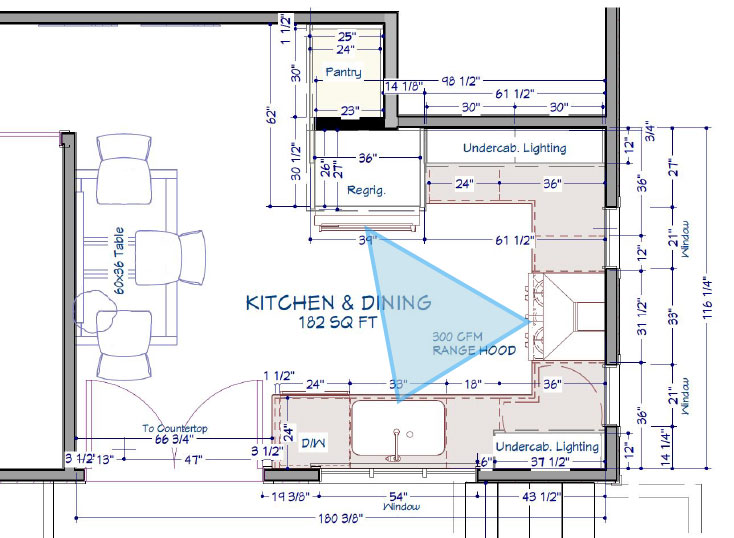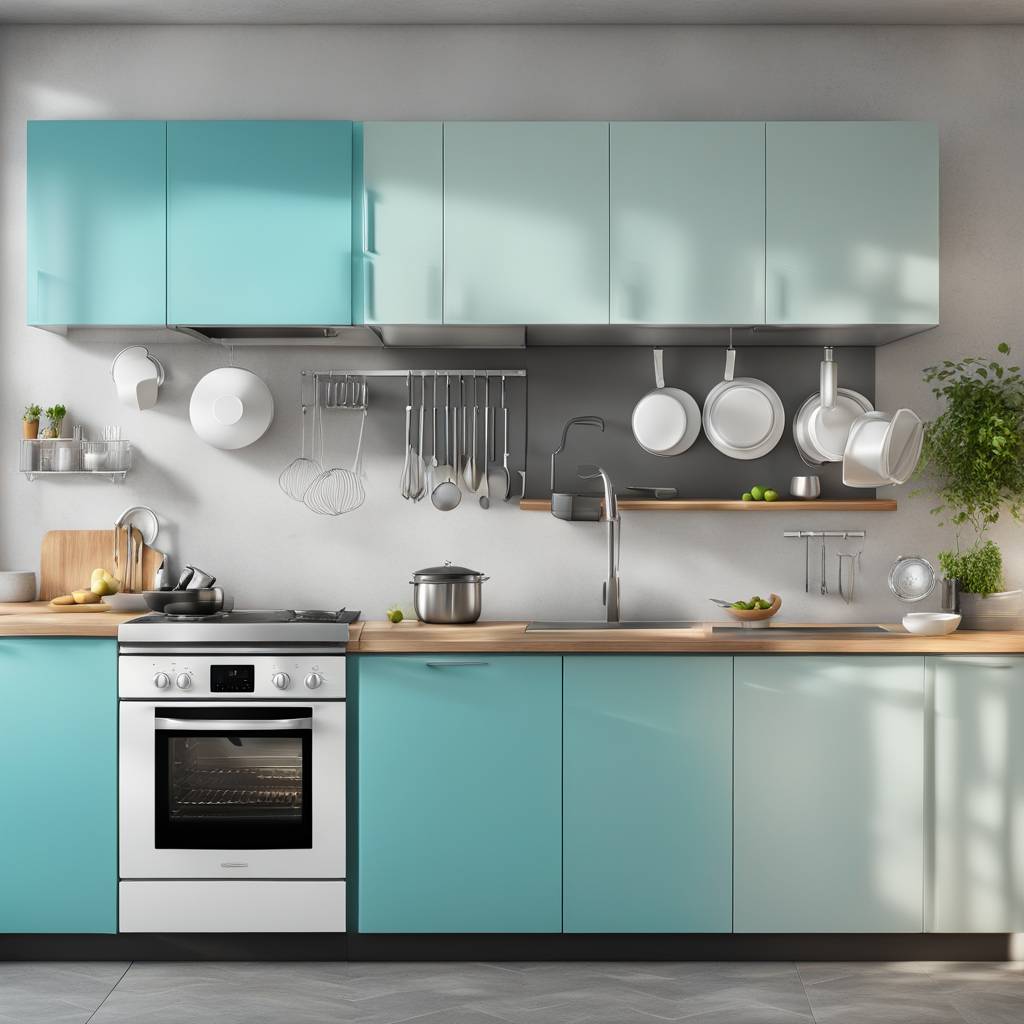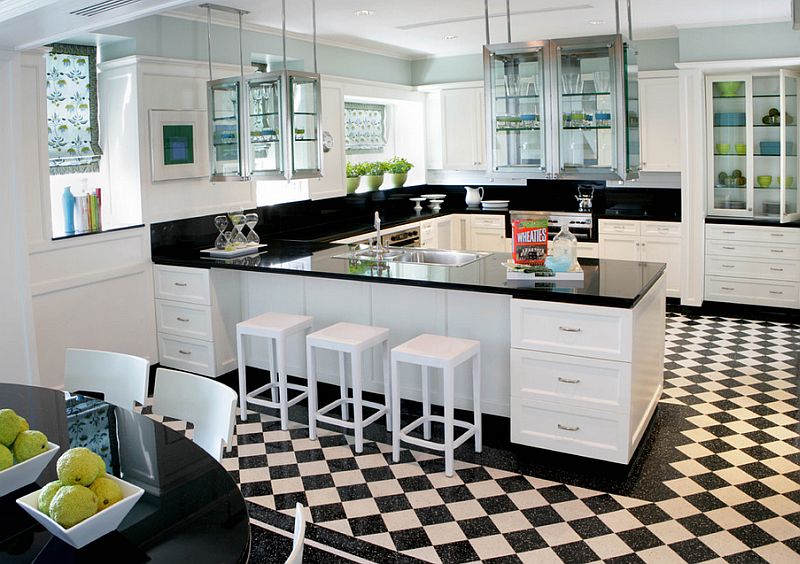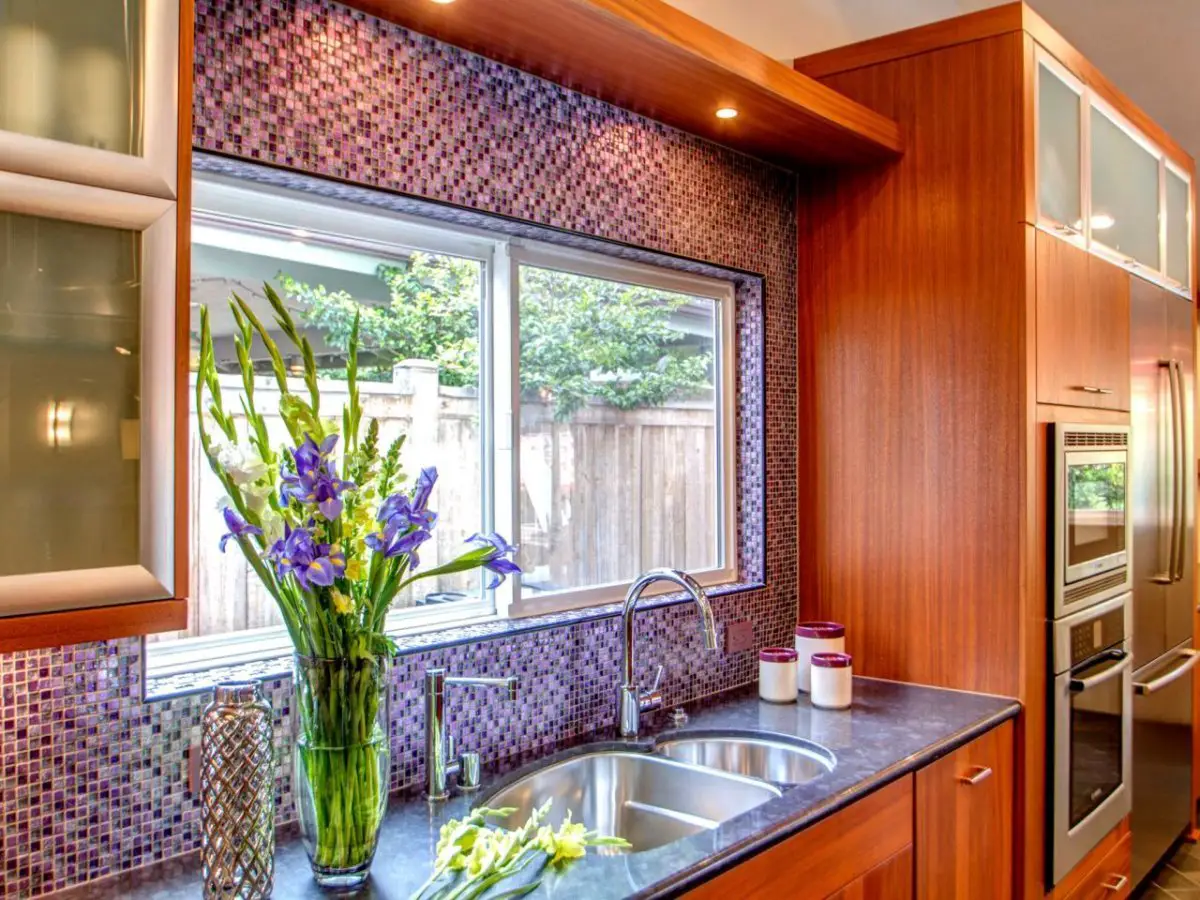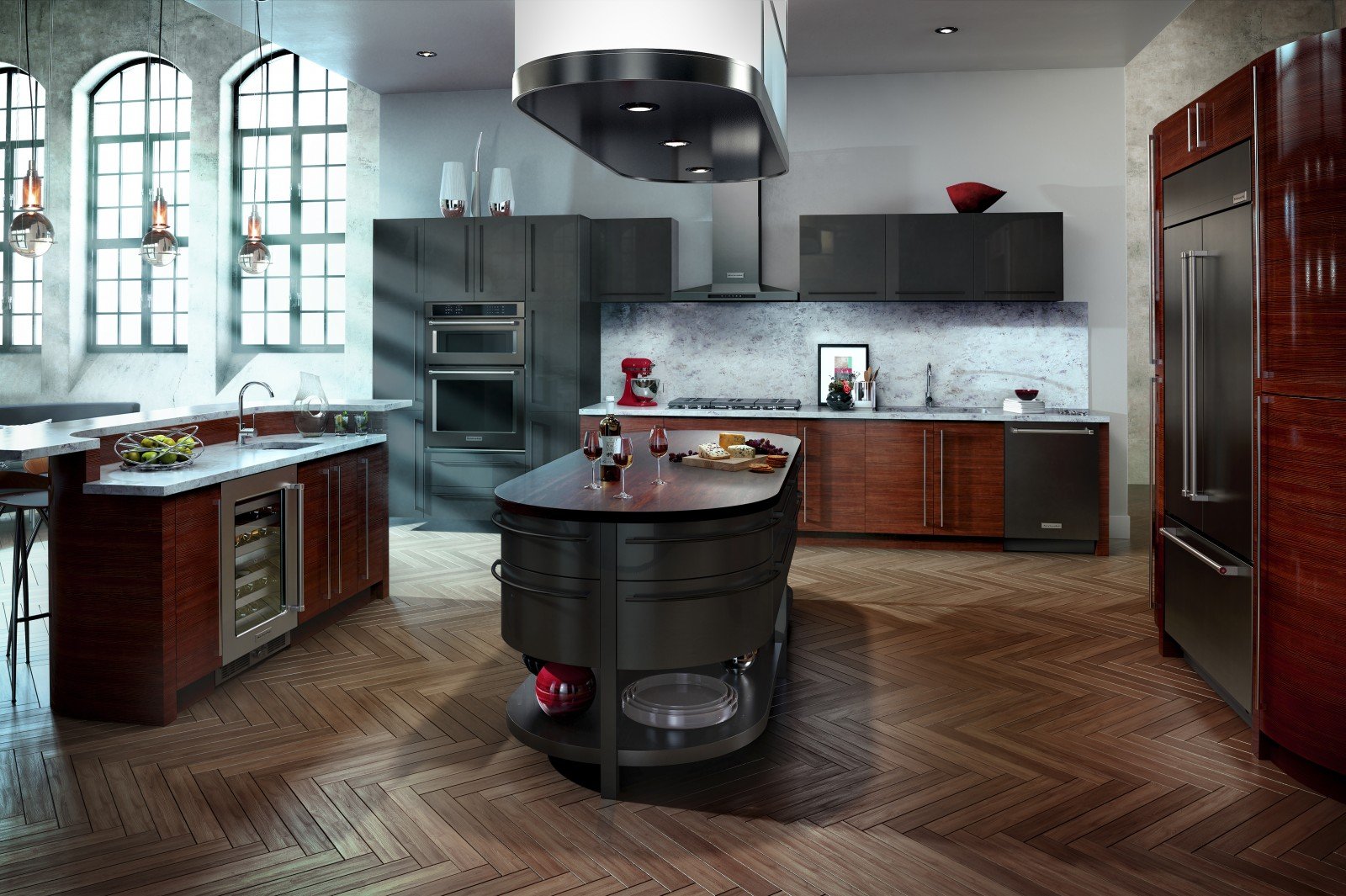The arrangement of the sink, stove, and refrigerator forms the cornerstone known as the “kitchen work triangle.” This layout plays a pivotal role in optimizing functionality and efficiency within the space. By strategically placing these key elements, a circular routing way is achieved, allowing for easy movement between tasks. However, while traditional kitchens heavily relied on this concept, modern designs have introduced innovative variations that challenge its supremacy.
We’ll uncover practical tips for maximizing kitchen triangles and discuss alternative approaches that cater to diverse lifestyle needs. Join us as we unravel an age-old principle amidst a backdrop of evolving culinary spaces.
Key Takeaways
- Prioritize Efficiency: When designing your kitchen layout, prioritize efficiency by ensuring that the sink, stove, and refrigerator form a functional work triangle, allowing for smooth movement and task completion.
- Consider Modern Adaptations: Explore modern alternatives to the traditional triangle layout, such as zone-based designs or incorporating kitchen islands into the workflow, to maximize functionality and adapt to contemporary needs.
- Evaluate Pros and Cons: Consider the advantages and disadvantages of the triangle layout to make an informed decision that suits your specific kitchen space and lifestyle.
- Maximize Space in L-Shaped Layouts: For L-shaped kitchens, focus on maximizing space and ensuring a practical work triangle by strategically arranging key elements within the layout.
- Adapt to Small Kitchens: Implement creative strategies to incorporate the work triangle concept in small kitchens, such as utilizing compact appliances and clever storage solutions to maintain an efficient workflow.
- Blend Functionality with Aesthetics: Integrate the work triangle seamlessly into your kitchen design, considering aesthetic appeal while prioritizing functionality to create a harmonious and efficient cooking space.
Understanding Kitchen Triangle Concept
Efficiency Fundamentals
The kitchen triangle is a fundamental concept in kitchen design. It refers to the arrangement of the three main work areas in a kitchen: the sink, stove, and refrigerator. The layout of these elements significantly impacts the efficiency of a kitchen. For instance, placing these key features too far apart can lead to unnecessary movement and wasted time during meal preparation. On the other hand, positioning them too close together may cause congestion and hinder smooth workflow.
Maximizing productivity through layout design involves strategically locating these essential components to create an efficient workspace. By adhering to the kitchen triangle rule, designers ensure that there’s an optimal distance between each element, allowing for seamless movement while cooking.
In practical terms, imagine preparing a meal where you need to wash vegetables at the sink, chop them on a countertop near the fridge, and then cook them on the stove. A well-designed kitchen triangle would allow you to move effortlessly between these stations without unnecessary steps or obstacles.
Ergonomic Design Evolution
Over time, there has been an evolution in ergonomic kitchen design with increasing emphasis on user-friendly features. The integration of ergonomic principles aims to enhance comfort and functionality within kitchen spaces by considering how people interact with their environment.
For example, modern kitchens often incorporate adjustable countertops and cabinets that cater to individuals of varying heights or physical abilities. This ensures that everyone can comfortably access items stored in different parts of the kitchen without straining themselves.
Furthermore, advancements in technology have led to innovations like touchless faucets and motion-sensor lighting systems which not only add convenience but also contribute towards creating a more hygienic cooking environment.
Historical Perspective
The historical influences on kitchen layout are fascinating as they reflect cultural norms and societal changes over time. The evolution of traditional kitchen triangles has been shaped by various factors such as technological advancements, shifting family dynamics, and changing culinary practices.
For instance,historical influences can be seen in older homes where kitchens were often separate from living spaces due to cultural expectations around food preparation and social interactions. As lifestyles evolved over time,and open-concept layouts became popular,kitchens began integrating seamlessly into living areas,resulting in new approaches for organizing space while still adheringto fundamental efficiency principles.
Significance in Kitchen Design
Workflow Optimization
The triangle layout plays a crucial role in optimizing workflow. This layout involves positioning the three main kitchen elements – the stove, sink, and refrigerator – in a triangular formation. By doing so, it streamlines the flow within the kitchen space, making cooking and preparing meals more efficient. For instance, when these key elements are strategically placed within close proximity to each other, it reduces unnecessary movement while working in the kitchen.
Maximizing efficiency through an optimized workspace is another significant aspect of utilizing a triangle layout in kitchen design. With this arrangement, chefs or home cooks can seamlessly transition from one task to another without any hindrance due to inconvenient placement of essential appliances or workstations. This not only saves time but also enhances productivity during meal preparation.
Space Utilization
Efficient use of available space is paramount when creating an effective kitchen layout. The triangle concept contributes significantly to maximizing space for optimal functionality within a kitchen area. By carefully planning and implementing this layout, designers can ensure that every inch of available space is utilized effectively for various purposes such as cooking, storage, and food preparation.
Incorporating versatile storage solutions within the kitchen design ensures that there’s ample room for storing utensils, cookware, and pantry items without cluttering the workspace. For example, by integrating cabinets and drawers into strategic locations within the triangle layout, homeowners can keep their kitchens organized while maintaining easy access to necessary items during culinary activities.
Design Aesthetics
Balancing aesthetics with practicality is crucial when considering kitchen layouts that incorporate the triangle concept. It’s essential to create visually appealing yet functional spaces where individuals enjoy spending time while engaging in culinary activities or socializing with family members or guests.
Kitchen designers often focus on integrating style into practical layouts by incorporating modern cabinetry designs that complement both aesthetic appeal and functionality. These designs contribute not only to enhancing visual appeal but also ensuring convenience and accessibility within the kitchen environment.
Modern Alternatives to Traditional Layout
Contemporary Relevance
The role of triangle layout in kitchen design has evolved to suit the needs of modern households. While the traditional concept still holds value, contemporary kitchen designs have adapted it to align with current lifestyles. For example, incorporating technology into modern kitchen designs has become a pivotal aspect. Smart appliances and gadgets are strategically placed within the triangle layout for convenience and efficiency.
In today’s context, the triangle layout is not just about positioning the stove, sink, and refrigerator; it also involves integrating smart devices that enhance functionality. For instance, a touch-screen refrigerator with Wi-Fi connectivity can be seamlessly integrated into the cooking zone to facilitate easy access to recipes or grocery lists while preparing meals. This adaptation demonstrates how classic concepts have been reimagined to cater to modern needs.
Diverse Kitchen Zones
Another key evolution in the triangle layout is its role in creating diverse zones within the kitchen space. This approach involves segregating different areas for specific tasks such as cooking, cleaning, and storage effectively. By doing so, homeowners can optimize their workflow by minimizing unnecessary movement between these zones.
For example, placing the dishwasher closer to both the sink and storage area streamlines dishwashing activities without disrupting other culinary tasks at hand. Moreover, this zoning strategy enhances multitasking capabilities within a limited space by allowing multiple individuals to work efficiently without interfering with each other’s tasks.
Designing an Efficient Work Triangle
Layout Planning
Strategic layout planning is crucial in kitchen design as it determines the functionality and efficiency of the space. Customizing layouts to individual needs ensures that the kitchen accommodates specific cooking habits and preferences. For example, a homeowner who loves baking might prioritize having ample counter space for rolling out dough and cooling racks for freshly baked goods. Considering traffic flow in kitchen design is also essential to prevent congestion and promote smooth movement within the space.
Adapting the triangle concept to various kitchen sizes showcases the triangle layout’s adaptability. Whether it’s a compact urban apartment or a spacious suburban home, the triangle layout can be flexibly implemented to suit different spaces. This flexibility allows homeowners with diverse kitchen sizes to benefit from an efficient workflow without feeling constrained by their spatial limitations. Furthermore, optimizing the triangle layout for specific user requirements emphasizes its versatility in catering to individual preferences such as incorporating specialized appliances or additional workstations based on unique needs.
Evaluating Pros and Cons
Advantages Highlighted
Leveraging efficiency and functionality advantages is crucial. By strategically placing the sink, stove, and refrigerator at the three points of the triangle, a smooth workflow is achieved. This not only saves time but also reduces unnecessary movement within the kitchen space. For instance, when preparing a meal, having these key elements close to each other makes cooking more efficient.
Creating ergonomic and user-friendly workspaces is another significant benefit of utilizing a triangle-based layout. The design allows for easy access to essential areas, promoting convenience during food preparation. With everything within reach without excessive stretching or bending, it minimizes physical strain on the cook’s body.
In addition to these benefits, highlighting how the placement of appliances creates an efficient flow can significantly impact daily activities in the kitchen. For example, imagine being able to move seamlessly from one task to another without any obstacles due to thoughtful appliance placement.
Limitations Discussed
Discussing potential drawbacks of triangle layouts is important for balanced consideration. One challenge associated with traditional triangle concepts involves inadequate space between elements leading to congestion during simultaneous use by multiple individuals in the kitchen area. However, this limitation can be addressed through effective design solutions such as incorporating additional countertop space or creating alternative traffic paths within the layout.
Balancing limitations with effective design solutions requires careful planning and consideration of individual needs and preferences when implementing a triangular kitchen layout concept. It’s also essential to recognize that while traditional triangular layouts may have limitations regarding space utilization or accessibility issues in larger kitchens or open floor plans; they can still be adapted effectively with creative modifications based on specific requirements.
Beyond the Traditional Triangle
Incorporating modern trends into kitchen layouts is essential for keeping up with the latest design concepts. Contemporary kitchens are embracing new ideas, moving beyond the traditional triangle layout to create more functional and visually appealing spaces. For instance, integrating kitchen islands has become increasingly popular in modern designs. Islands not only provide additional workspace but also serve as a focal point for socializing and dining.
Evolving concepts in contemporary kitchen design emphasize the importance of seamless flow and accessibility within the space. This means that designers are rethinking the conventional golden triangle concept to better suit the needs of today’s homeowners. Instead of focusing solely on efficiency, they are now considering how to balance aesthetics with practicality, resulting in more personalized and versatile kitchen layouts.
Trends shaping the future of functional kitchens involve maximizing efficiency through designated work zones. By creating specialized areas for different tasks such as cooking, preparation, and cleanup, designers can optimize workflow and organization within the kitchen space. This approach allows for a more tailored experience that caters to individual preferences while maintaining an efficient overall layout.
Triangle Kitchen Island Integration
Maximizing Functionality
Creating a kitchen island can play a crucial role in maximizing the functionality of the kitchen space. By strategically integrating this element into the design, it becomes possible to enhance usability and efficiency. The island serves as a multifunctional area for various kitchen activities, such as food preparation, cooking, and even dining. This strategic placement not only balances form and function but also ensures that essential elements are within easy reach.
For example, incorporating built-in appliances like stovetops or sinks into the kitchen island allows for seamless workflow during meal preparation. This integration optimizes space utilization by centralizing key functions in one accessible location. Moreover, adding seating options around the island transforms it into an inviting social hub while maintaining its practicality.
Efficiently utilizing every inch of available space is vital in any kitchen layout. A well-designed kitchen island contributes significantly to effective space management by offering additional storage solutions and countertop surfaces. For instance, incorporating cabinets or drawers underneath the island provides extra storage for cookware, utensils, or pantry items—maximizing usability without compromising on aesthetics.
Smart spatial planning ensures that traffic flow within the kitchen remains unobstructed while accommodating diverse activities simultaneously. With a thoughtfully designed kitchen island, there’s potential to create an organized workspace where different tasks can be carried out seamlessly without congestion or clutter.
L-Shaped Layouts and Space Maximization
L-Shape Advantages
L-shaped kitchen layouts offer several advantages, especially. With the sink, stove, and refrigerator positioned at the three points of the triangle, an L-shaped design can effectively minimize movement between these key areas. This setup allows for a smooth workflow in the kitchen, as everything is within easy reach.
Another benefit of L-shaped kitchens is their capability to maximize corner space utilization. These corners are often overlooked in kitchen designs but can be efficiently utilized with this layout. By installing corner cabinets or pull-out drawers, you can make use of every inch of available space in your kitchen.
Small Kitchen Application
Tailoring triangle concepts to fit compact areas becomes crucial. In such cases, an L-shaped layout proves beneficial by allowing for a streamlined flow between the main workstations without taking up too much space. By optimizing this design for smaller kitchens, you can create an efficient layout that maximizes functionality even in limited areas.
In addition to creating efficient layouts for compact kitchens, maximizing functionality in limited kitchen spaces is essential. With an L-shaped design specifically tailored for small kitchens, you can ensure that all necessary appliances and storage solutions are strategically placed within arm’s reach.
Implementing Work Triangle in Small Kitchens
Compact Design Strategies
In small kitchens, space-saving strategies play a crucial role in optimizing the available area. Balancing functionality with limited space constraints is essential for creating an efficient kitchen layout. For instance, utilizing multi-functional furniture like foldable tables or chairs can help save space while providing versatility for various activities. Incorporating clever storage solutions such as vertical cabinets and pull-out drawers maximizes storage capacity without occupying much floor space.
Creative solutions are also vital for optimizing small kitchen layouts. This may involve customizing cabinet sizes to fit specific items or using magnetic racks to store utensils on the walls, freeing up counter space. Furthermore, integrating built-in appliances like microwaves and ovens can streamline the overall design while maintaining a sleek and uncluttered look.
Ergonomic Solutions
Prioritizing ergonomic considerations in kitchen designs ensures that user comfort is integrated into functional layouts. For example, placing commonly used items within arm’s reach reduces unnecessary movement and enhances workflow efficiency. Incorporating adjustable countertops or pull-out work surfaces allows users to customize their workspace according to their height and preference, promoting a comfortable cooking experience.
Creating ergonomic solutions involves designing workflows that minimize physical strain during food preparation and cooking tasks. Placing the sink, stove, and refrigerator in close proximity forms an efficient work triangle, reducing excessive movement between these key areas of the kitchen. By doing so, it streamlines the workflow by allowing easy access to essential components without traversing long distances repeatedly.
Summary
You’ve now grasped the importance of the kitchen triangle layout in optimizing your kitchen’s functionality. From understanding its concept to exploring modern alternatives and maximizing space, you’re equipped to create an efficient and practical kitchen design. Remember, it’s not just about following tradition; it’s about finding what works best for your space and needs.
Now, roll up your sleeves and start planning your kitchen layout. Consider how the work triangle can enhance your cooking experience and make daily tasks more convenient. Whether you’re renovating or starting from scratch, keep the principles of the work triangle in mind to design a kitchen that’s both stylish and functional.
Frequently Asked Questions
FAQ
What is the significance of the kitchen triangle concept in kitchen design?
The kitchen triangle concept, comprising the sink, stove, and refrigerator, ensures an efficient workflow. It minimizes unnecessary movement and enhances functionality by creating a cohesive work area for meal preparation.
How can I implement the work triangle in a small kitchen space?
In smaller kitchens, consider optimizing vertical storage to free up floor space. Utilize compact appliances and clever storage solutions to maintain an efficient work triangle without compromising on functionality or aesthetics.
Are there modern alternatives to traditional kitchen layout designs that incorporate the triangle concept?
Yes, modern kitchen designs offer various alternatives like open-concept layouts where functional zones seamlessly blend together while still adhering to the principles of the work triangle for optimal efficiency.
What are some pros and cons of incorporating a traditional work triangle into a kitchen design?
Pros include improved efficiency and ergonomic workflow. However, potential cons may arise if not implemented correctly such as limited flexibility in positioning major appliances or restricted accessibility within the cooking zone.
How can I integrate a triangular island into my kitchen layout effectively?
A triangular island can be integrated strategically to enhance both aesthetics and functionality. It should complement rather than disrupt the existing work triangle by providing additional workspace while maintaining smooth traffic flow within your culinary domain.
